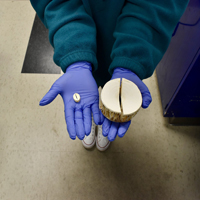White Sharks Global was the first international white shark conference since the white shark research community met in Honolulu (Hawaii) in February 2010. With the increasing amount of studies focused on white sharks but continued and evolving issues around this species, the recent conference held in Port Lincoln (Australia) in November 2023 was a timely opportunity for scientists, managers, industry, and students to meet, exchange knowledge, report on recent scientific studies, and facilitate in-depth discussions of key challenges related to white sharks (e.g. managing human-shark interactions, supporting the recovery of this threatened species).
This collection of Wildlife Research papers features selected studies presented during White Sharks Global and outputs from workshops held during the conference. Other recent studies on white sharks that can help in the management of this threatened but potentially dangerous species are also included.
Guest Editors
Charlie Huveneers (Flinders University)
Lauren Meyer (Flinders University)
Samantha Andrzejaczek (Stanford University)
Chris Lowe (California State University Long Beach)
Last Updated: 20 May 2025





